A Sea of Opportunity
How marine food production and thriving blue ecosystems go hand in hand.
In Denmark a small NGO called Havhøst (directly translated Ocean Harvest), is working to make food production in the ocean truly sustainable so that ocean life may flourish once again.
Their idea is simple — they want to spread the knowledge that mussels, oysters and seaweed can support human life and return the undersea deserts created from years of human-led abuse to thriving ecosystems.
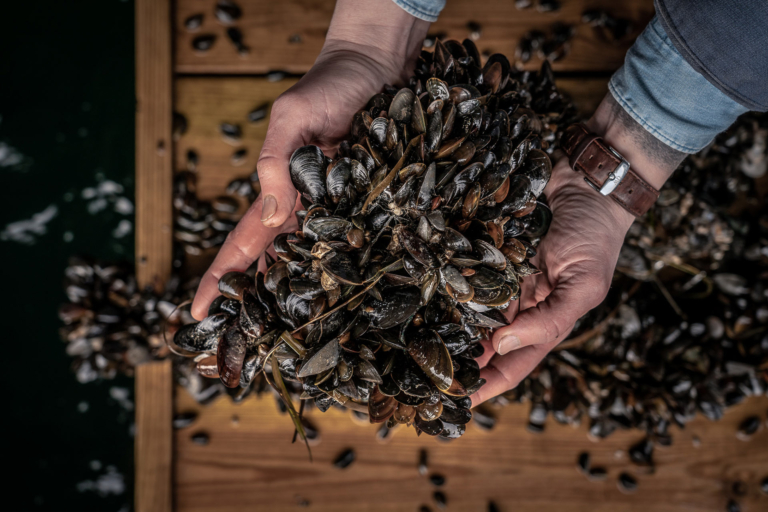
Photo: Havhøst
For years, it’s been documented by The Technical University of Denmark (DTU) that small scale fishermen in Denmark have caught increasingly fewer fish. They’ve confirmed that Danish fish populations in coastal waters are diminishing, and research is ongoing to determine the exact scope of the problem. Extensive fishing and excess nutrition from land-based agriculture, the climate crisis and loss of habitats are some of the factors causing this.
Mussels act as natural filtering systems that clean the ocean water for excess nutrition. Mussels, oysters, and seaweed form a paradise for other species as habitats, key nursery areas, natural refuges and feeding grounds. All of which is key to supporting biodiversity below the surface and back to Denmark’s waters.
In the perfect setup, mussels, oysters and seaweed are even grown together. This is called multitrophic cultivation and works in contrast to monoculture cultivation of things like wheat on land that leaves little room for any life, other than the wheat itself, which results in a loss of biodiversity. The opposite lies at the heart of the Havhøst proposition to promote small scale, multitrophic cultivation, so that the mistakes from farming on land are not repeated at sea.
Land makes up less a third of the Earth’s surface and less than a third of that land is usable for agriculture. On the other hand, more than 70% of the Earth’s surface is water. For example, ten kilograms of beef needs 200 m2 of land. At sea, ten kilograms of mussels only needs 0,3 m2. In this light, ocean farming gets a whole new perspective and can contribute to safeguarding and restoring wild nature on land as well as in the ocean. Small-scale multitrophic ocean farming is not only sustainable, but a regenerative form for producing food and giving more back to nature than it takes.
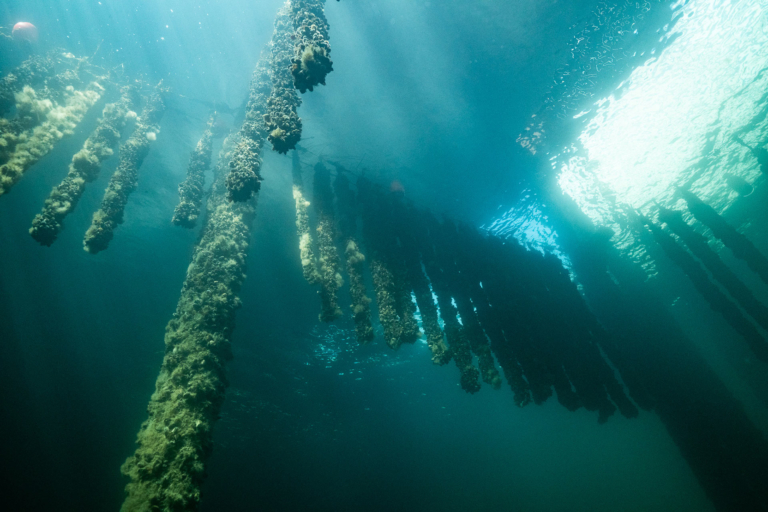
Photo: Havhøst
Currently, there are initiatives taking place around Denmark, that demonstrate the potentials of regenerative ocean farming. Recently, the EU-funded OLAMUR project will bring together key sectors to demonstrate sustainable commercial solutions for both the North and the Baltic Sea. It will establish pilot demonstration sites where seaweed and blue mussels will be grown within wind farms. A pilot site will be created in the Baltic Sea at Kriegers Flak on the east coast of Denmark. In the Baltic countries, the potential of seaweed farms doubling as carbon sinks and food sources is garnering attention.
Unfortunately, we have yet to see industry leaders and politicians actively embrace regenerative ocean farming. So, the change is beginning with everyday people. In Denmark, people with different backgrounds, from smiths to teachers to biologists are coming together to organize communities, creating their own blue community garden across the Danish coastlines.
This presents a good business opportunity for local fishermen. With manageable effort, they can grow bivalves and seaweed, and generate income to supplement their lost revenue from fishing. In the process of cultivation, they will even create marine environments conducive to future fish populations.
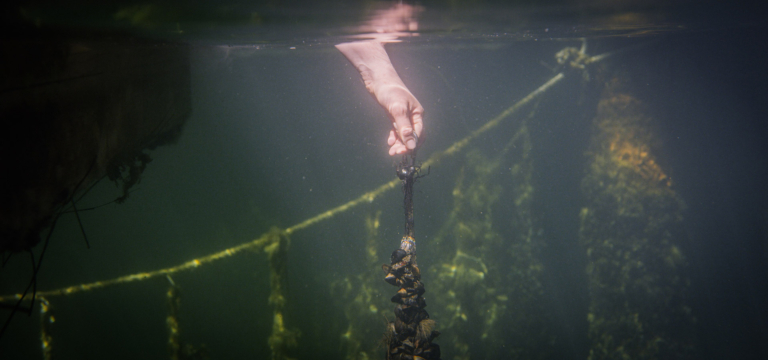
Photo: Havhøst
Coastal fisherman, Mogens Pedersen, operates from Havnsø port where he sells fresh fish directly to consumers. But Mogens is not only focused on the fish in his nets. He has also started cultivating seaweed and blue mussels near the small Danish island, Nekselø.
Mogens has fished the local Danish waters for eight years and has witnessed a decline in fish stocks. His adventure in mussel cultivation as a supplement to fishing began when he got in touch with Havhøst, and from there he started to test whether it was even possible for him to grow mussels where he fished. But there is more at stake for Mogens. He uses low impact fishing gear, which is important to him, and this aligns with the regenerative cultivation of mussels, oysters, and seaweed.
“It’s kind of pioneering work when you’re involved in something like this,” says Mogens. “So, it’s a risk you take. But I think we need to do it because, on one hand, I want to be an environmentally friendly fisherman, and on the other hand, I want to contribute to ensuring that there are more fish in the ocean in the future.”
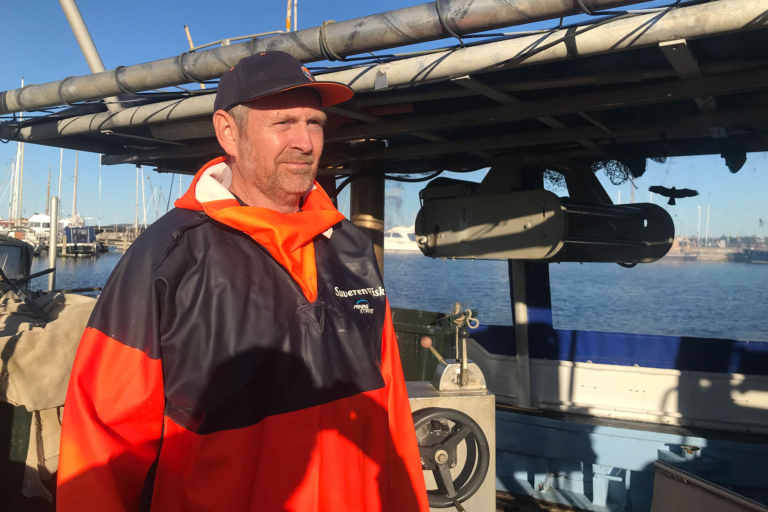
Photo: Havhøst
Mogens is exploring new paths and seeing opportunities where others don’t. When there is a storm, seaweed gets caught in his nets — a major annoyance for most fisherman, but not Mogens. He sells the wild seaweed to Dansk Tang (Danish Seaweed), who then distribute it to the market, mainly to restaurants. Seaweed also makes for a great fertilizer and stimulates soil bacteria, and Mogens’ seaweed is being used as such by a small, local regenerative wine grower, further demonstrating a multistranded market approach available for the regenerative ocean farmer.
For the past year, Havhøst has worked on a project funded by GUDP, Green Development and Demonstration Program), aimed at mapping the current players in the regenerative ocean farming industry and identifying needs and gaps for a future industry to flourish.
Right now, there’s an emerging market in Denmark and many other European countries for mussels, oysters and seaweed.
Mussel production is increasing globally, with 94% of total production coming from aquaculture. The EU is the second-largest mussel producer in the world, and Denmark is the only country in Europe that still predominantly relies on scraping wild stocks of blue mussels from the seabed, in fact, 95% of Denmark’s blue mussel stock is collected in this deeply harmful way.
When it comes to seaweed, there is not yet an established market in Denmark. There are less than ten producers and most seaweed is not grown on lines but collected in the wild. Today, it is primarily high-end restaurants and certain larger players in the food service industry that buy the seaweed in relatively small quantities. It is expected that the seaweed market will grow in the coming years, but it will require producers and the market to move synchronously to figure out how the market can be shaped.
There is a desire to eat more seaweed, but the product is not available in grocery stores. As Havhøst sees it, we should actively work to produce seaweed graded for human consumption, supporting and inspiring a new food culture based on regenerative food sources. Plus, seaweed has numerous other applications as an ingredient and as feed and fertilizer.
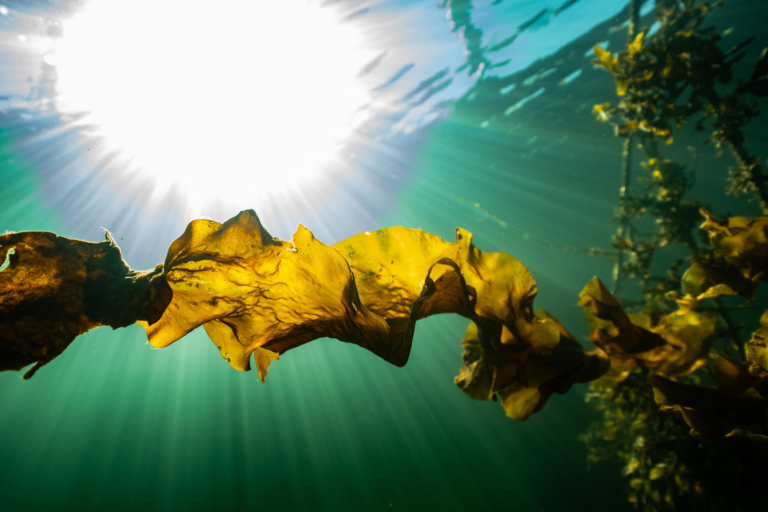
Photo: Havhøst
The European Commission recently opened up to the concept by having a call for funding community-driven business models like regenerative ocean farming. A call specifically aimed at developing business models that combine sustainable financial foundation with regenerative effects on marine and societal environments. A consortium of four partners, one of them being Havhøst, obtained a grant from this call. And for the next three years the project COOL BLUE will strive to develop and demonstrate these business models in three pilot regions: Sweden, Finland, and Denmark. Also encompassing a focus on demonstrating the viability of a small scale and multitrophic cultivation approach.
For Denmark and other countries around the Baltic Sea, this means that there’s a way forward to restore the coastal waters while also revitalizing communities while producing tasty and healthy food for humans.
Havhøst will soon launch a handbook detailing the concrete steps, potentials, and pitfalls for establishing regenerative ocean farming in Denmark to support fisherman and others interested in becoming seafarmers. Head here for some tips on how to get started.
